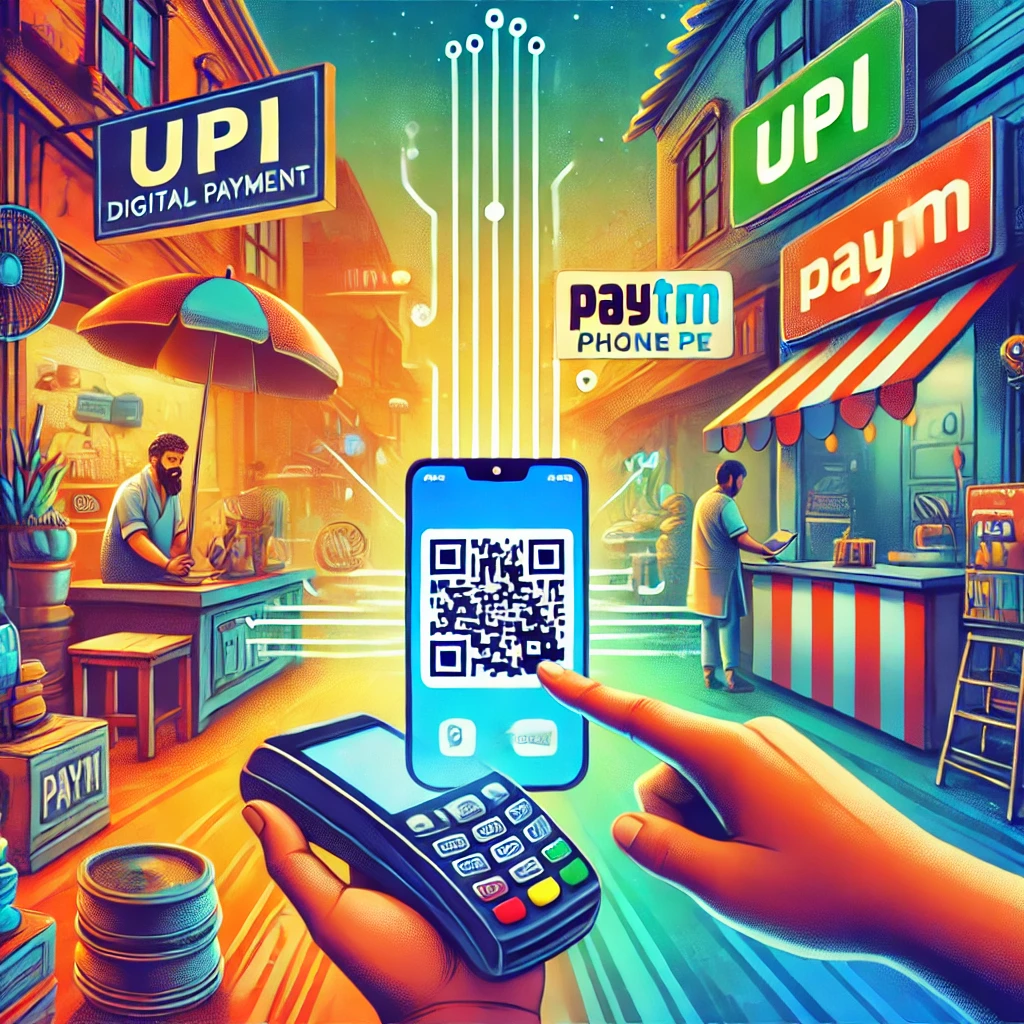India has witnessed a remarkable transformation in its financial ecosystem over the last decade, largely driven by the rapid adoption of digital payment systems. The shift from cash-driven transactions to a predominantly digital economy signifies the country’s journey towards financial inclusion, technological innovation, and a cashless society. In this blog, we’ll explore the trends shaping digital payments in India and what the future holds for this dynamic sector.
Key Trends in Digital Payments
- Unified Payments Interface (UPI) Revolution The introduction of UPI in 2016 by the National Payments Corporation of India (NPCI) has been a game-changer. UPI has made peer-to-peer (P2P) and business-to-consumer (B2C) transactions seamless, with real-time payment capabilities. In 2023, UPI recorded over 10 billion transactions monthly, reflecting its widespread adoption.
- Contactless Payments The COVID-19 pandemic accelerated the adoption of contactless payment methods. Tap-and-pay cards, QR codes, and NFC-enabled devices have gained popularity as they offer convenience and safety. Retailers and service providers across the country now prominently feature QR code-based payment options.
- Government Initiatives The Indian government’s push for a Digital India initiative has played a pivotal role in promoting digital payments. Schemes like PMGDISHA (Pradhan Mantri Gramin Digital Saksharta Abhiyan) aim to increase digital literacy in rural areas, while incentives for merchants accepting digital payments have further encouraged adoption.
- Growth of Mobile Wallets Platforms like Paytm, PhonePe, and Google Pay have become household names, offering consumers a convenient way to manage their finances. Mobile wallets are not just limited to payments; they also facilitate bill payments, ticket bookings, and investments, creating a comprehensive financial ecosystem.
- Integration of Artificial Intelligence (AI) and Blockchain AI and blockchain technologies are enhancing security and efficiency in digital payments. AI-driven fraud detection systems and blockchain-based transaction records are ensuring transparency and building trust among users.
Benefits of Digital Payments
- Convenience Digital payments have eliminated the need for carrying cash and waiting in long queues. Transactions can be completed in seconds with just a smartphone and an internet connection.
- Financial Inclusion Digital payments have brought banking services to the unbanked population, especially in rural areas. Aadhaar-linked payment systems and mobile banking have empowered millions.
- Boost to the Economy Digital payments reduce the cost of handling physical cash and enhance tax compliance by bringing more transactions into the formal economy. This boosts government revenue and supports economic growth.
- Enhanced Security Advanced encryption methods, biometric authentication, and AI-powered fraud detection systems make digital payments more secure compared to cash transactions.
Challenges Facing Digital Payments
- Cybersecurity Risks The increasing volume of digital transactions has also made the sector a target for cybercriminals. Data breaches and online fraud remain significant challenges.
- Digital Divide Despite the widespread adoption, a considerable portion of the population still lacks access to smartphones, stable internet, or digital literacy, limiting the reach of digital payments.
- Reliability Issues Technical glitches, server downtimes, and transaction failures can erode trust among users. Ensuring a robust infrastructure is crucial for sustaining growth.
- Regulatory Concerns The digital payment ecosystem operates under stringent regulations. Frequent changes in compliance requirements can create challenges for payment providers and merchants.
Future Outlook
- Rural Penetration The next wave of growth in digital payments will come from rural India. With increasing smartphone penetration and government initiatives, the digital divide is gradually narrowing.
- Global Expansion of UPI NPCI’s efforts to internationalize UPI are gaining traction. Countries like Singapore and UAE have started accepting UPI payments, opening doors for cross-border transactions.
- Rise of Embedded Finance Digital payments are integrating with various platforms, such as e-commerce websites and social media, creating seamless financial experiences for users. Embedded finance is expected to redefine customer interactions.
- Focus on Security and Privacy With the advent of technologies like tokenization, biometric authentication, and end-to-end encryption, the security of digital payments will continue to improve, fostering greater user confidence.
- AI-Powered Personalization Payment apps are leveraging AI to offer personalized financial advice, track spending patterns, and recommend investment opportunities, making them indispensable tools for users.
Conclusion
The rise of digital payments in India is a testament to the country’s commitment to embracing technology and fostering innovation. While challenges remain, the benefits far outweigh the drawbacks. As India continues to build a robust digital payment infrastructure and address key challenges, the future of digital payments looks promising. With its potential to drive financial inclusion, boost economic growth, and revolutionize the way transactions are conducted, digital payments are set to be a cornerstone of India’s financial ecosystem in the years to come.






